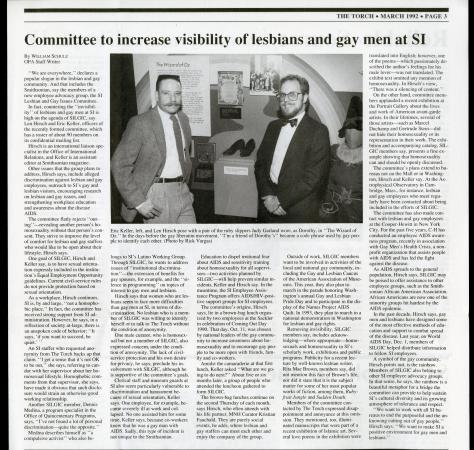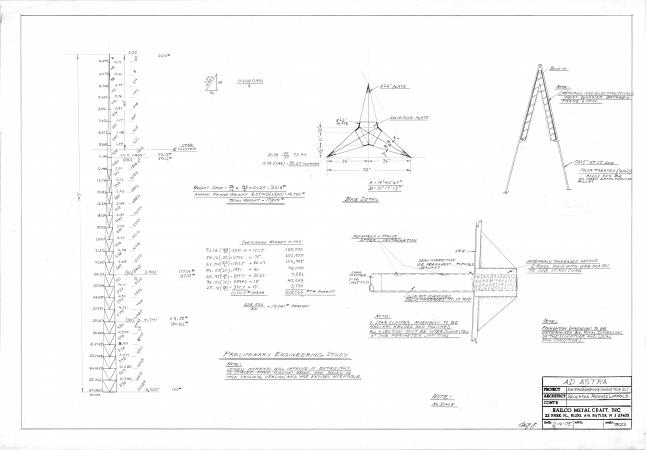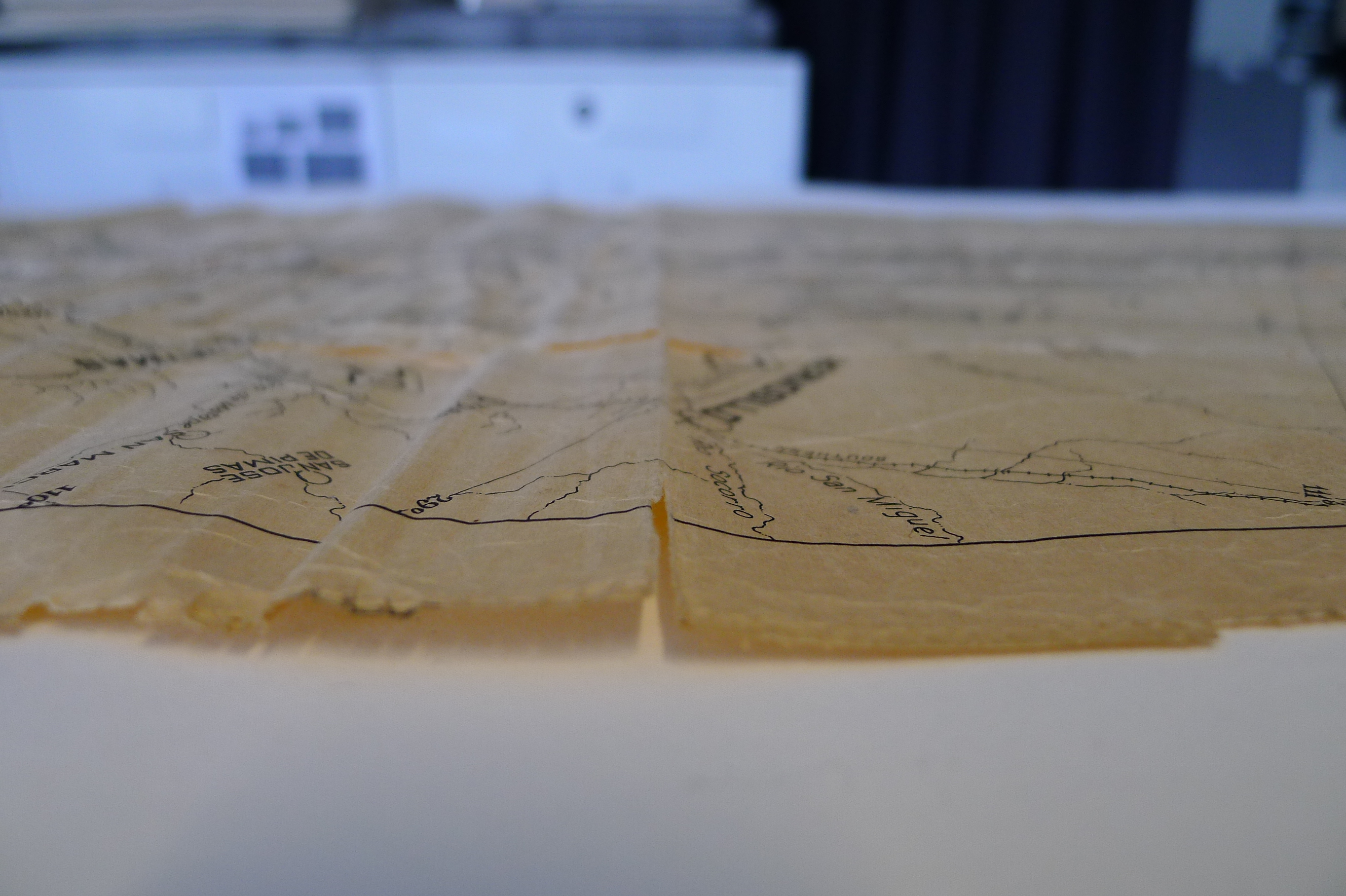The only thing better than discussing our collections with our colleagues here at the Archives, is sharing them with some of the people who appreciate and support them as much as we do. With your gift at our upcoming Smithsonian Libraries and Archives Adopt-a-Book salons, our team will be able to preserve and make accessible archival collections for future generations. Join us for our final program on Tuesday, April 26 at 5:30 p.m. ET, to learn about some of the items up for “adoption.”
In anticipation of this year’s Adopt-a-Book salons, we asked some of our experts to pick an item and share why it’s so special. Here’s what they said.

The Torch, Smithsonian’s staff newsletter
As a historian, I’m trying to tell a fuller picture of the Smithsonian and the experience of its employees. That research includes the history of LGBTQ+ employees. This article details the origins of the Smithsonian’s first LGBTQ+ employee resource group. When I came across it, it gave me names, details, and dates that I’d never seen before. For researchers, the Torch is a treasure trove of information that can kick start and help support their research.
—Hannah Byrne, Historian

Ad Astra construction drawings
Ad Astra, the abstract statue created by artist Richard Lippold, has been an iconic feature in front of the National Air and Space Museum (NASM) since it was installed on Jefferson Drive in 1976. These construction drawings include details about how the starbursts are crafted, and shed some light on the planning and design that went into getting this 146-foot sculpture to its home on the National Mall.
As you may be aware, the National Air and Space Museum is in the midst of an extensive renovation. In the summer of 2021, the Ad Astra construction drawings were requested by the construction company tasked with deinstalling the sculpture. Naturally, we could not send the original, archival drawings to the construction site. The drawings needed to be retrieved from remote storage, shipped to the NASM archives to be digitized, and sent electronically to the architect. The digital images of the drawings may now be shared electronically, and enable us to perform conservation treatment on the original drawings before returning them to storage.
—Tad Bennicoff, Reference Archivist

The Dawson Map
The Dawson Map is a fascinating look at how Smithsonian collecting scientists kept records during expeditions. E. Yale Dawson, botanist and cacti expert, notated a AAA map from the early 20th century to show where he picked up his various specimens, along a route traced in red ink. He wasn’t satisfied with the paper map’s likely longevity, so he had the map lined with a piece of (possibly purloined) hotel linen by inexpertly stitching through both layers with a sewing machine. 100 years later, the sewing has led to breakages along the lines of stitching, which have essentially become ready-to-tear perforations. It’s impossible to line up the paper map to read it easily or digitize it. Conservation staff, including me, have disassembled the map’s components, and we will line the paper map with Japanese tissue to realign the torn pieces and reinforce the paper support, and house all parts of the assemblage in a custom box to keep the relationship obvious to future researchers.
—William Bennett, Conservator

The World Is Yours, Smithsonian’s first radio program
The World Is Yours was the Smithsonian’s first radio program and aired weekly from June 7, 1936 to May 10, 1942. It was funded by the Works Progress Administration and presented as part of the Educational Radio Project, and is considered one of the most successful educational radio programs of the 1930s. The scripts were written in consultation with Smithsonian staff and over the life of the show, the programs covered virtually every aspect of the Smithsonian’s collections and research. This episode “Man Against Germs” caught my attention because the current public health issues had me questioning what they knew of germs in 1937 and how far our knowledge has come since then. This episode is also a great introduction to the narrator, affectionately called "Old Timer," as well the sometimes colorful dramatizations that were featured each week.
—Kira Sobers, Media Digitization Manager
Listen to "Man Against Germs" — Brief Overview
[Woman] Good morning, Old Timer.
[Jim] Yes, good morning. How are you?
[Woman] You promised to tell us all about man’s fight against germs this morning.
[Jim] Man’s fight against germs? Well, that’s like saying man’s fight against the unseen.
[Old Timer] Well, at this very moment in this room, all about us are countless microscopic animals who would be delighted to get inside of us and strengthen themselves by weakening us.
[Woman] I remember once seeing some germs under a microscope. Tiny little beasts, they frighten me.
[Old Timer] Ah, it’s the fact that they can’t be seen that makes them so incidious.
[Jim] Yes, but, uh, how do they get in to our bodies?
[Old Timer] Well, first by penetration. If you cut yourself while shaving, many germs can have the time of their lives, and the result might be boils or ring worms.
[Woman] Oh, Jim, I’ve always told you to be careful when you shave.
[Jim] I’ll never shave again darling.
[Old Timer] Another way is to breathe them in. Germs jump at the chance of entering that way, causing tuberculosis, pneumonia, influenza.
[Jim] You can swallow them too, can’t you Old Timer?
[Old Timer] Yes, and if you’re not careful, you get a sore throat, and many stomach diseases.
[Woman] You certainly are a cheerful person, Old Timer. (laughs)
[Old Timer] Well, one has to face facts. There are germs in the air, eager to do their work. The more we are taught how to combat them, the more really cheerful we can be. Imagine had we lived in a time when people didn’t know there were such things as germs?
[Woman] How terrible. Always exposed to a danger they didn’t even know existed.
[Old Timer] Exactly.
Related Resources
- Adopt-a-Book Salon: Your Smithsonian Past, Present, and Future
- “Adopt-a-Book” items, Smithsonian Libraries and Archives
Produced by the Smithsonian Institution Archives. For copyright questions, please see the Terms of Use.

Leave a Comment